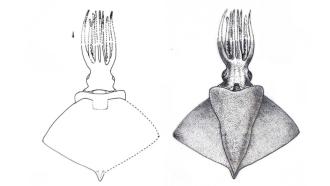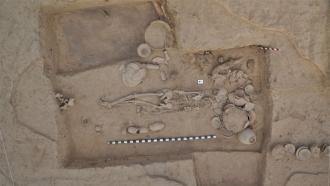
In a world constantly pushing the boundaries of technology, the quest for smaller, more efficient electronic devices is relentless. The smartphones in your pockets, the laptops on your desks, or even the advanced medical equipment that saves lives —all rely on increasingly sophisticated electronics, like semiconductors, and rare-earth raw materials. These are incredibly efficient, but not very environmentally friendly, and are also incredibly hard to procure due to geopolitical and global supply chain issues. But, what if the next big leap in electronics isn’t semiconductor-based, but organic? Since its discovery in 1953 by James Watson and Francis Crick, DNA has intrigued information theorists and technologists alike, not only for its biological purposes but for technological applications.
An international team of researchers from Universidad Pedagógica y Tecnológica de Colombia, Colombia, Indian Statistical Institute, Kolkata, Universidad de Tarapacá, Chile, Mediterranean Institute of Fundamental Physics, Italy, and Universidad Técnica Federico Santa María, Chile, are exploring this idea. Their new research sheds light on how the intricate dance of electrons and vibrations within DNA molecules could be harnessed for future technologies.
Did you know? If you could stretch out all the DNA in a single human cell, it would be about 2 meters long. Despite its length, DNA is incredibly condensed to fit inside the nucleus of a cell, which is about six millionths of a meter in diameter. |
The team have been investigating how DNA's unique structure can influence the flow of electricity and heat. Their studies delved into how DNA acts as a conduit for electrons, examining the complex interactions, specifically how electrons and vibrations, known as phonons, interact. Phonons can be thought of as collective vibrations of the atoms of the DNA molecule.
The researchers used two different models to represent the DNA molecule: the fishbone model and the ladder model. These models are simplified representations of the complex DNA structure, enabling scientists to utilise computational tools to simulate the movement of electrons through it.
They found that the way electrons interact with the vibrations of the DNA molecule, known as the electron-phonon coupling, significantly impacts how well the DNA can conduct electricity and heat. They discovered that as this coupling gets stronger, it can create new pathways for electrons to travel, even in energy ranges that would usually be blocked. They observed this phenomenon in both the fishbone and ladder models, suggesting it's a fundamental aspect of how DNA behaves electronically.
The study also examined decoherence, which is akin to a loss of information or noise that can disrupt the smooth flow of electrons. By accounting for decoherence, the researchers sought to obtain a more realistic representation of how DNA would function in a real-world electronic device. They calculated key properties, including electrical conductance (how easily electricity flows), thermal conductance (how easily heat flows), the Seebeck coefficient (which relates to generating electricity from heat differences), and the figure of merit, a measure of a material's suitability for thermoelectric applications.
The researchers acknowledge that their models are simplifications of reality and that real-world DNA devices might face additional challenges, such as the stability of the DNA molecule itself under experimental conditions. However, their findings provide a solid theoretical foundation for understanding and potentially controlling these molecular interactions.
As we move beyond the limitations of silicon, materials like DNA offer exciting possibilities for creating bio-integrated devices, sensors, and even components for quantum computing. By understanding how to manipulate electron-phonon interactions, scientists could design DNA-based circuits that are incredibly small, highly efficient and capable of performing complex tasks, all while being environmentally friendly. Ultimately, this research brings us one step closer to a future where the very building blocks of life could power the technologies of tomorrow.
This article was written with the help of generative AI and edited by an editor at Research Matters.






